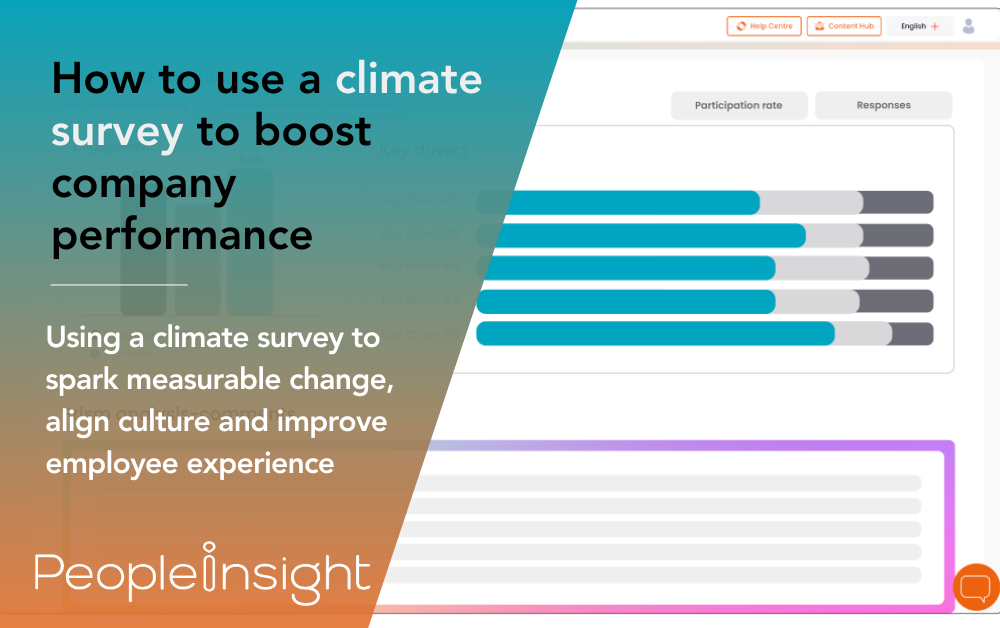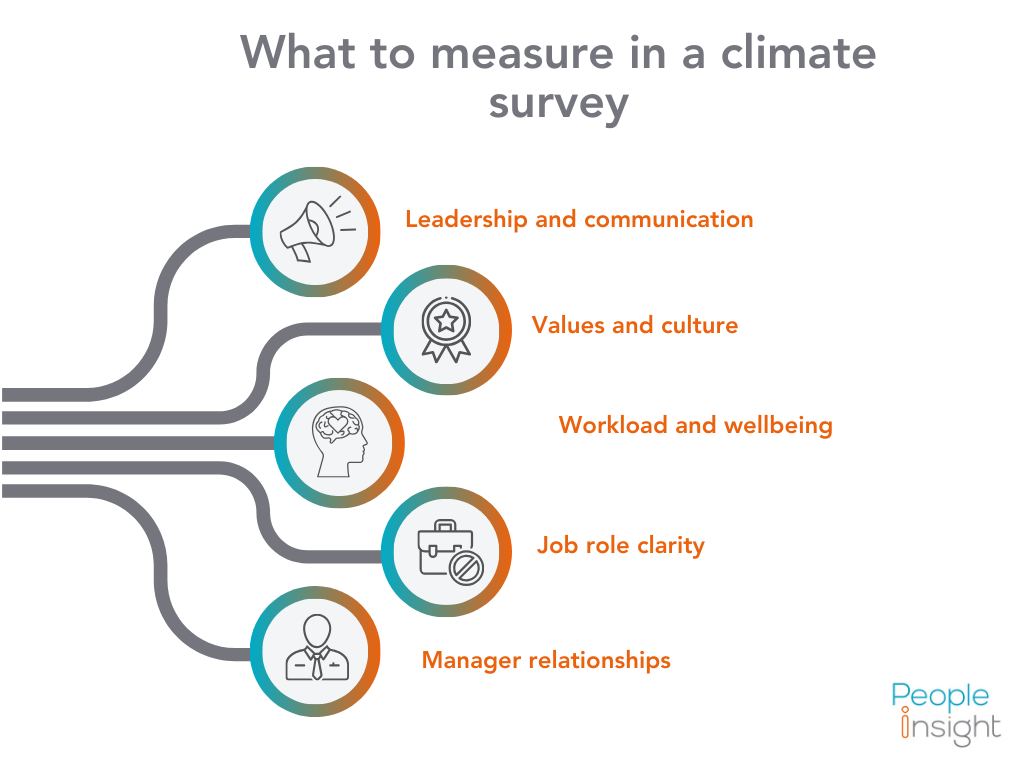
Many HR and internal comms leaders face the same frustration: you’re working hard on culture and engagement, but performance metrics aren’t shifting. Employee sentiment feels mixed. You sense there are problems beneath the surface, but you’re not seeing clear feedback that points the way forward.
A climate survey helps make those issues visible. It gives employees a way to share honest feedback across topics like leadership, wellbeing, communication and values, providing a clear picture of how people feel about the working environment.
But it’s not just about listening. A well-run climate survey can lead to impactful survey results that inform actions, increase engagement and align everyone behind your company’s goals.
In this guide, let’s explore what a climate survey is, how it can help your organisation in a meaningful way and best practices for implementing surveys.
Related: The most actionable employee survey platform for change
A climate survey is an anonymous employee listening tool designed to measure how people see their work environment. While employee engagement surveys focus on emotional commitment, climate surveys cover a wider set of drivers: organisational culture, inclusivity, leadership, job role clarity, psychological safety and more.
They help HR leaders, managers and senior leadership teams understand which aspects of the workplace culture support performance, and which get in the way.
Unlike one-off polls or ad hoc pulse surveys, a climate survey is usually conducted annually or biannually. This gives you time to interpret the findings and act on them.
If your goal is to improve performance at a company-wide level, it’s not enough to make assumptions about what employees need. You need evidence-based insights that lead to meaningful change. Here’s where climate surveys can help.
A climate survey provides:
Research from the CIPD shows that effective employee voice is linked to higher performance and lower absence. A climate survey is one of the most structured and effective ways to capture that voice.
Your climate survey should be designed around the themes most relevant to your goals, culture and organisational challenges. Common areas to explore include:

Choosing the right areas to measure is essential. At People Insight, our climate surveys are designed by experienced HR experts to produce actionable feedback. Data for data’s sake won’t help anyone.
Trust is the foundation of any climate survey. Employees need to believe their responses will be confidential and that their feedback will be used.
You can build trust by:
As we keep reiterating, collecting data is only the first step. To improve performance, you need to translate findings into action.
Here’s how to make that happen:
Low scores matter, but so do variations across locations, departments and demographics. Use segmentation to understand where perceptions differ and why. Our generative AI, Prism, does this for you in minutes, saving you hours of time.
Qualitative insights often contain the most actionable feedback. Use natural language processing (NLP) or manual coding to identify recurring themes and tone.
Some climate survey insights will point to immediate improvements. For example, a need for clearer internal communication. Others may show systemic issues that require longer-term culture change.
Present your findings in a way that resonates with leaders. Focus on how climate survey results connect to business outcomes like employee retention, innovation and performance. This helps build support for action at the top.
The most common pitfall of climate surveys is inaction. Employees speak up, but nothing changes. When this happens, trust in the process inevitably drops.
To avoid this:
A climate survey is one of the most effective ways to embed employee listening into your organisation. When listening is consistent, genuine and leads to action, people are more engaged, retention improves and performance follows.
But this doesn’t happen automatically. You need an approach that combines the right survey tools, clear internal comms, skilled analysis and action planning that sticks.
Done well, climate surveys create a virtuous cycle: listening drives action, action drives engagement and engagement drives performance.
Want to see how a climate survey could help your organisation improve culture and performance? Talk to us about our employee survey platform and how we help turn insight into change.
